Tenbukan Bujitsu Renmei
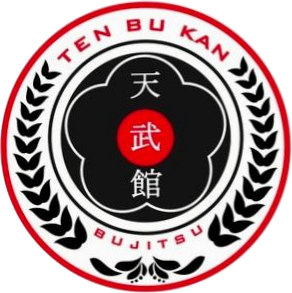
Soke Rick Jessee was a member of the Seishinkai Karate Union of Japan and had earned the title of Shihan. Upon the passing of Soke Shogo Kuniba in 1992, Soke ventured away from that organization. In 1995 he founded the Tenbukan in order to provide some kind of organizational structure for his students. This was also a way to incorporate others who practiced the Japanese and Okinawan arts. He chose the name Tenbukan directly from the his Korean organization Chun Moo Kwan. If the characters are written in Kanji, a Korean will pronounce it Chun Moo Kwan, if a Japanese person pronounces the same kanji they will say Tenbukan. Both translate to Heavenly Warrior Clan or group. He did this to stay true to his martial arts philosophy of the Heavenly Warrior. The Heavenly Warrior is one who believes that we are guided by our Heavenly Father in all things and we in our martial arts serve our fellow man and do so by using what we learn to protect the weak, encourage the meek and being positive effluents on our students and others throughout our journey through life.
Karate Do History
According to ancient Okinawan legend, Karate had its beginnings in India with a Buddhist monk named Daruma. Tradition says that Daruma traveled across the Himalayan Mountains from India to the Shaolin Temple in Honan Province of China. There he began teaching the other monks his philosophies of physical and mental conditioning. Legend has it that his teachings included exercises for maintaining physical strength and self defense.
This same monk known as Bodhidharma in India and as Ta Mo in China, is credited with founding the school of Buddhist philosophy known as “Ch’an” in China and as “Zen” in Japan.
The Okinawans believe that the art known as Karate today came from those original teachings of Daruma through an Okinawan who visited or lived for some time in China at the Shaolin Temple. Whether or not this is true, it is obvious that there are similarities in the Okinawan art of Karate and the language and martial arts of China.
Further, we must assume that the Karate of Okinawa developed from trial and error of fighting experiences into a different and unique martial art.
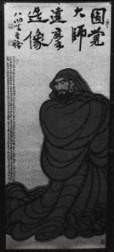
In the ancient Okinawan language of Hogen, the word for China is Kara-no-Kuni and, as much of the original technique of the martial art practiced in Okinawa originated in China, the art became known as Kari Te or “Chinese Hand”. Another term later developed to distinguish the art of Okinawa from the Chinese martial arts was “Tode” or “Okinawan Hand”. “Te”, meaning the martial art of the hand, implies that the human body is trained to become all the weapons a man or woman needs for self-defense. It is believed that “Te” is at least 1,000 years old. The term “Karate” as used today means “empty hand” and has the same meaning. Master Gichin Funakoshi, an Okinawan who founded the famous Shotokan style of Karate in Tokyo, Japan in the late 1920’s, is credited with changing the original kanji character for “Kara” meaning China to “Kara” meaning empty.
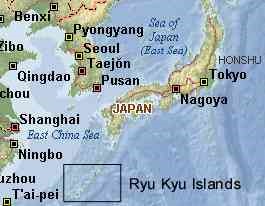
The development of “Te” continued over many years and was mostly practiced in secret by only a few individuals. Development was centered primarily in the three Okinawan villages of Shuri, Naha, and Tomari-te and each village had a master who is credited with developing the style unique to that area.
Again, the very early history of “Te” is shrouded in legend. It is believed that a man named Chatan Yara (born 1668) in Shuri was sent to China at the age of 12 to learn the Chinese martial arts. In 1700, he returned to Shuri and began to teach.
One of his students was Takahara Peichin who is most famous as the Sensei of the man who later became known as “Tode” or “Karate” Sakugawa.
The legend says that Sakugawa began training with Takahara in 1750 and later went to China where he trained for many years. He is credited with introducing the Dojo concept of training to Okinawa.
The most famous student of Sakugawa was Matsumura Sokon (born 1805) who was sent by the royal family of Okinawa, Sho Shi, to study at the Shaolin Temple in China in 1815. He returned to Okinawa and was appointed the chief bodyguard for the King Sho Ko. Since he lived in the royal village of Shuri, his style became known as Shuri-te. Matsumura was awarded the tide of “Bushi” or Samurai and became known as “Bushi” Matsumura. He died at the age of 87, leaving a legacy of many famous students.
Itosu, Ankoh (Yosutsune) (1830-1915) was the most famous student of Matsumura. He is credited with introducing Karate into the Okinawan public school system in 1903. Prior to this the practice of Karate had been done privately in the homes of the masters and in many instances, was done in secret. Perhaps Itosu’s major contribution to the art of Karate was his emphasis on kata. He taught that a student had to be able to put the body under complete control of the mind before any other type of development can take place. Kata, he taught, is the best method of achieving this type of mind control. According to him, mobilization of the body, control of breath, stilling the mind, and concentration are made possible through the practice of Kata. Itosu believed that through Karate man can channel aggression.
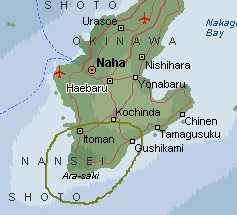
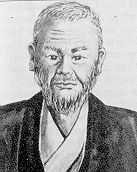
Master Ankoh Itosu
He said, “Karate is a way of life, a means to achieve complete security and fearlessness.” To him, Karate was a method of character development and not a way of attaining fame.
He is also credited with developing the Chanan Kata which were later known as the Pinan Kata and now are called Heian Kata.
In the village of Naha, Higaonna Kanryo (1853-1915) made his style of Naha-te very popular. when he was 17 years old, he went to Fu-Chien, China to study and remained there for 28 years. After his return from China, Higaonna opened a dojo in Naha. His best student was Miyagi, Chojun who later created the Goju-Ryu style of Karate.
Since Tomari was a town or farmers and fishermen, it was scorned by the villagers or the more sophisticated Naha and Shuri. However, many Chinese fishermen came to the port of Tomari and the people there also learned a martial art. The two primary sensei of Tomari were Matsumora (1829~ 1898) and Oyadomari (1831-1905). These men never became as famous as Itosu or Higaonna but they each taught men who later played an important role in the history or Karate.
Oyadomari taught Kyan Chotoku (1870-1945) who created one or the three styles of Shorin-Ryu Sukunaihayashi Shorin-Ryu. Matsumora’s student Motobu, Choki (1871-1944) became known as an excellent fighter and was the sensei of Kokuba, Kosei, the founder of SEISHIN-KAI. Motobu, Choki also studied with both Higaonna and Itosu and developed a style unique to him.
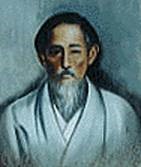
Master Kanryo Higaonna
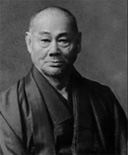
Master Choki Motobu
There is some evidence which suggests that Shuri-te derives from Shaolin Temple boxing, while Naha-Te incorporates more of the soft, Taoist techniques involving breathing and the control or “Ki”, the “Life-Force”, called “Chi” in Chinese. Tomari-te developed from both traditions. It is important to note that the towns of Naha, Tomari and Shuri are only a few miles apart and today, are barely differentiated, so that the differences between their martial arts were essentially ones of emphasis, not of kind. Beneath these surface differences, both the methods and aims of all Okinawan Karate are one and the same.
In the words of Goju-Ryu Sensei Morio Higaonna, “…Karate is like a cloud with nothing substantial to grab hold of. Karate is very difficult, but its purpose is to train both the mind and the body. Karate is something you can do your whole life. In Okinawa a bushi is someone who has discovered the correct way of life and achieved a placid mind through Karate training. Training is necessary for human beings to achieve this state of mind.” Sensei Higaonna’s statement sums up the basic philosopy of all Okinawan Karate.
During the time that the art or Karate was being developed in Okinawa, Japan conquered the tiny kingdom in 1609 and it became a Japanese territory. The conquering Japanese actually helped further the development of the martial art by banning the use of all weapons; only the Japanese samurai were allowed to carry swords. Forced to practice in secret, the Okinawan masters developed and perfected kata. Kata are composed of a series of techniques which can be practiced alone or with a partner. Since kata resemble the traditional folk dances of Okinawa, anyone caught practicing the martial art could claim to be only practicing a harmless folk dance. Different masters developed kata unique to their style and, thus kata became the primary method of transmitting the style of each master from one generation to another. This remains true today as the primary distinctions in Karate styles lie in the way in which the style or ryu performs kata and which kata are performed within that ryu.
By the end or the nineteenth century the names of the three basic styles of Karate in Okinawa had changed to the same names that are used today. The arts of Shuri and Tomari were combined into one name, Shorin-Ryu, meaning the “flexible pine school”. Naha-te became known as Goju-Ryu, the “hard and soft school.” Shorin-Ryu has developed into several different sub-styles but Goju-Ryu has remained unified stylistically. Mabuni Kenwa (1889-1952) a student of both Master Itosu (Shorin-Ryu) and Master Higaonna (Goju-Ryu) developed his own style from a combination of both Shorin and Goju and this style is called Shito-Ryu. Shito-Ryu as a name was developed from the reading of the kanji characters of names of Itosu and Higaonna. The Chinese characters (Kanji) used to write Japanese names can have two pronunciations. Master Mabuni named his style “Shi” from “ITO” and “To” from the “HIGA” of Higaonna. Today Shito-Ryu is one of the four major styles of Karate practiced in Japan.
During the time that the art of “te” was developing in Okinawa, the Japanese did not have a similar martial art. They practiced Judo, Jiu Jitsu, Kendo and other sword arts but not an art with the emphasis on the “empty hand” as the primary method of self defense. The Japanese martial arts involved grappling as in Judo or a weapon as in Kendo. Therefore, when a visiting crown prince of the Japanese royal family saw a demonstration of “Karate” in Okinawa, he was greatly impressed. He extended an invitation for an Okinawan master of Karate to visit Japan and give a demonstration. The Okinawan Sensei discussed this and chose Funakoshi, Gichin, a student of Master Itosu to go to Japan and present the demonstration. He was chosen because he was a school teacher who could give more lucid explanations of the art of Karate. Master Funakoshi gave his famous demonstration in Tokyo in 1922 and was so well received that he never returned to his homeland of Okinawa. Instead, he remained until his death in Japan and he established the style known as Shotokan. Thus, Karate, the art that had begun in secret in Okinawan villages spread to Japan where it would grow into an international art practiced today in many countries all over the world.
The History of Shito-Ryu
Karate originated as a martial art thousands of years ago and was brought to Japan from China, Taiwan and Okinawa. Many of the famous karate-ka, or Bushi as they were known in Okinawa, experimented and developed their skills in such provinces as Shuri, Naha and Tomari. But unlike Judo and Kendo, Karate was a secret art, unknown to the general public. There was no fixed system until approximately 1907 when Yasutsune Itosu of Shuri and Kaneryo Higaonna of Naha-both of whom are regarded today as two of the most influential teachers of Okinawan Karate-gained a good following for both of their own special styles. Master Itosu taught the Nai-huan-chi form and Master Higaonna taught Sanchin, which was later developed into the present-day Goju-ryu style by Chojun Miyagi.
Kenwa Mabuni who had studied under both Master Yasutsune Itosu and Master Kaneryo Higaonna devised the Shito-ryu system. Born in 1889, Mabuni was the 17th generation son of a famous samurai named Onigusuki. Mabuni was keenly aware of the accomplishments of his brave ancestors and, wanting to overcome poor health, began intensive karate training at the age of 13. He also studied weapon techniques of the Bo, Sai, Tonfa, Kama, and Nunchaku.
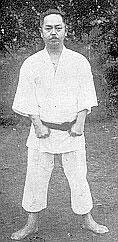
Master Kenwa Mabuni
The name ‘Shito’ is the combination of ‘shi’ and ‘to’, the two first characters of the names of Master Itosu and Master Higaonna. After learning from other masters like Master Aragaki and Master Matsumura and by mixing the teaching of Master Itosu and Master Higaonna, he developed a new system, originally named ‘HANKO RYU’ (Half-Hard style), but, later changed it to reflect the deep respect he felt towards his two great masters and called his new system Shito-ryu. (The Japanese government’s martial arts sanctioning organization, the Dai Nippon Butoku-Kai began to demand the different groups applying for membership, be more specific in the description of their Karate systems, and pressured them to name their systems).
In 1929 Master Mabuni made a permanent move to Osaka to teach at universities and police departments. Over the next few years, Master Mabuni dedicated himself to the further development and promotion of Shito-ryu Karate-do in the Osaka area. He was faced with an extremely difficult task due to the unwillingness of the population to accept him or this strange looking system of self-defense, resembling an ancient ‘Okinawan-Fist Dance’.
In order to bring Shito-ryu to the general public’s attention, Master Mabuni would perform many demonstrations where he would break bricks and boards to show the power of karate. Continually trying to gain acceptance of his art, Master Kenwa Mabuni would give free instruction at various police stations across western Japan.
Shito Ryu Karate-do became more accepted after this time, and Master Mabuni began to teach many students at his home and at many Universities that were forming clubs.
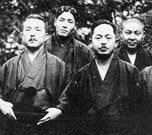
Kenwa Mabuni with
Yasuhiro Konishi (left)
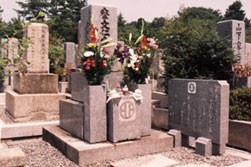
Kenwa Mabuni’s Grave Site
Among his many students included were his son, Kenei Mabuni, Kosei Kokuba (founder of Seishin Kai), Chojiro Tani (founder of Tani-ha Shukokai), Ryusho Sakagami (founder of Itosu-Kai), Yoshiaki Tsujikawa, Ken Sakio, Jun-ichi Inoue, Manzo Iwata, Toshiyuki Imanishi, Tokio Hisatomi and Ryusei Tomoyori. At first he taught his own students pure Shuri-te then pure Naha-te, but he also gave instruction in other master’s styles.
In Japan, Shotokan, Wado-ryu, Goju-ryu and Shito-ryu are the four main styles of Karate. Shito-ryu is the style that preserves most of the original Shuri-te techniques, compared with other styles such as Shotokan and Wado. It also
preserves original Naha-te techniques together with Goju, although each style places emphasis on different points. Technically, Shuri-te and Tomari-te have rather fast and straight movements, while Naha-te has circular and supple movements.
Master Mabuni died in his 64th year on May 23rd 1952, but his system remains one of the four major styles in Japan.
The Seishinkai Karate Union of Japan
Seishinkai (聖心会) is an international organization for the promotion and teaching of Shitō-ryū Karate. It is now also considered a sub-style of Shitō-ryū. Seishinkai is also an international shotokan karate organization based in the UK.
Seishinkai started as a dojo called Seishin-Kan, founded by Kokuba Kosei on June 6, 1943 in Osaka, Japan. The name Seishi-Kan comes partly from the Kanji for the temple located at the end of the street where Sensei Kokuba lived, Shotennoji. The character Sho can be pronounced sho or sei and means “pure.” He believed that true Karate-dō comes from the heart so he called his dojo Seishin or “pure heart” dojo.
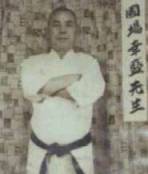
Master Kosei Kokuba
During World War II, many of the Okinawan Karateka who left their homeland came to Osaka and visited the home of their old friend, Kokuba Sensei. In return for room and board these men often taught at the Seishin-Kan dojo and gave private lessons to Kokuba Sensei’s young son, Kosho. The Seishin-Kan dojo became a well-known meeting place for budō men in Osaka and many of the founders of Karate taught there.
Kokuba Kosei was a devoted student of Motobu Chōki, and upon Motobu’s death in 1947 he became the second Sōke of Motobu’s branch of karate, known as ryū-kyu Motobu-ha Karate-dō, and Seishin-kan became the center of the new organization, Seishin-kai, promoting this style.
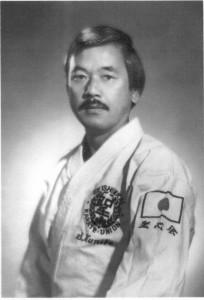
Master Shogu Kuniba
In 1959, after the death of Kokuba Kosei, his only son Kuniba Shōgō (Kosho) became the third Sōke of Motobu-ha Karate-do, and the 1st Sōke of Motobu-ha Shitō-ryū Karate-do, a new style that he created by blending Shitō-ryū, which he learned from Kenwa Mabuni himself, and other styles that he was taught by the great masters who visited Seishin-kan. Since he was only 29 years old, Teruo Hayashi was appointed as technical advisor and president of Seishin-kai from 1959 until 1970.
In 1983 Sōke Kuniba left Japan and moved the center of operation for Motobu-ha Shitō-ryū Karate-do to the United States, and after his death in 1992, Kunio Tatsuno emerged as the Kaicho of Seishinkai. Kuniba’s dojo in the U.S. separated from Seishinkai and became independent.
Rick Jessee and Tenbukan Karate Do
Grandmaster Rick Jessee began his martial arts journey in 1963 at the age of nine training in Judo and Jiu Jitsu in the Arena on the campus of Southern Illinois University where his aunt was a Professor. There he fell in love with the martial arts. In the years to come he was introduced to Shito Ryu karate by students of Richard P. Ballargeon who was a direct student of Soke Shogo Kuniba of the Seishinkai. Along the way while deeply studying Motobu Ha Shito Ryu of the Seishinkai Jessee also studied Shorin Ryu from students of Shorin Ryu master Glen Premru.
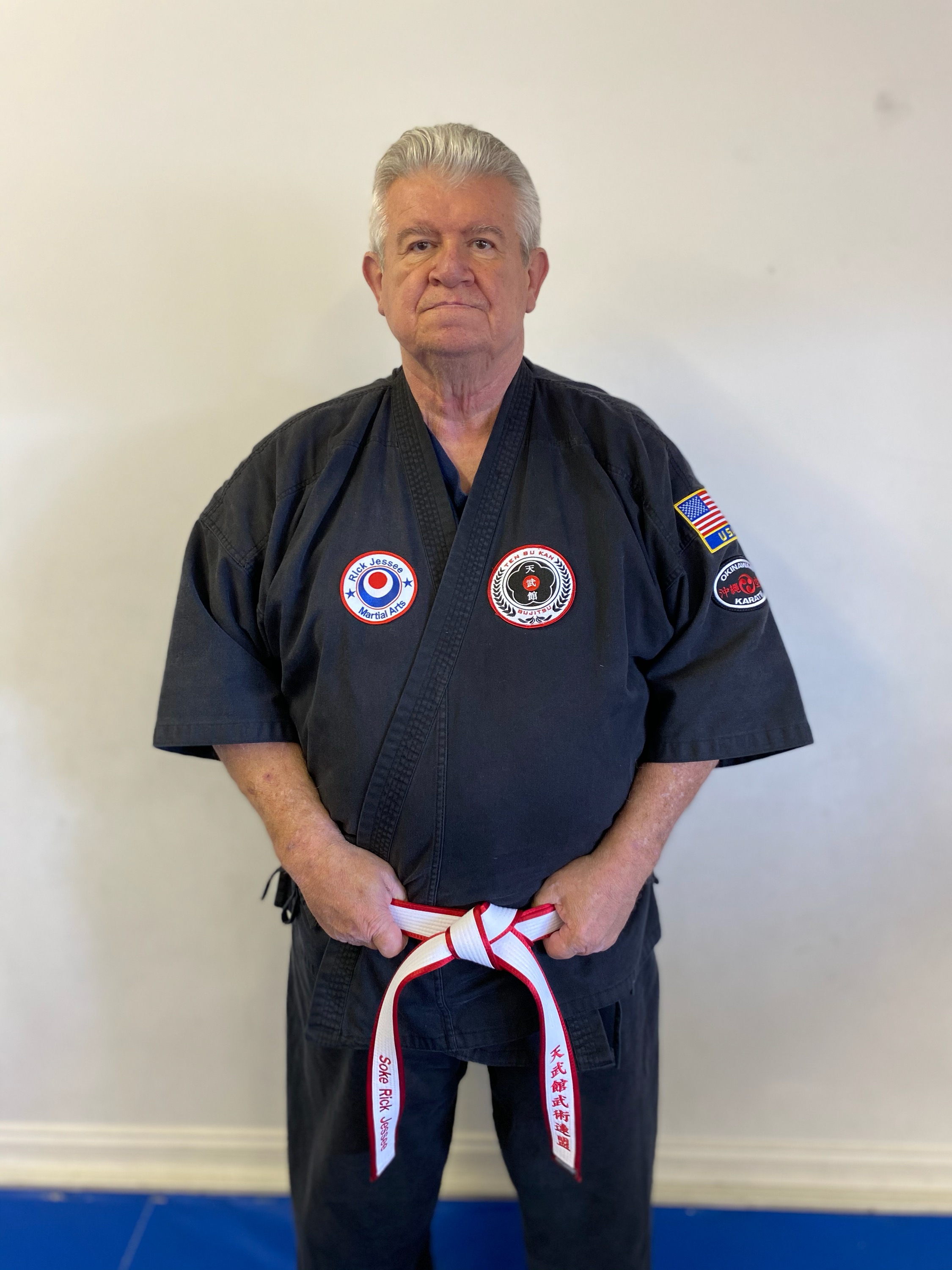
Soke Rick Jessee
In 1975 Jessee enlisted in the US Army and remained in service until 1985. During that time Jessee was exposed to many styles of Karate, Jiu Jitsu, and Aiki arts such as Korean Hapkido a Korean version of Japanese Aiki-Jujitsu. Jessee lived trained and taught Hapkido for almost seven years and upon returning to the US opened a Hapkido Dojang in 1985 called the United States Chun Moo Kwan. Jessee taught Hapkido exclusively for some time all the while still practicing his Japanese arts of Karate, Judo and Jiu Jitsu achieving the Black Belt grade of Godan 5th Dan and the title of Shihan (master teacher from Soke Shogo Kuniba of the Seishinkai Karate Union of Japan in 1986. Soke Kuniba developed cancer and passed away in 1992. Jessee continued his martial arts study and still continues to train and teach today. In 2015 he was honored to receive the Grade of 10th Dan Black belt from the Traditional World Karate Association Hanshi Victor Moore president. Vic Moore was one of karate’s greatest tournament fighters of the 1960s and 1970s and is a former 4 time world champion and first African American National champion. In 2016 Grandmaster Jessee was further recognized as 10th Dan Black Belt by Great Grandmaster Steve (Sanders) Muhammad, founder of the Black Karate Federation who was also one of the pioneers and tournament fighters in American Karate in the 1960s and 1970s. Receiving his 10th Dan Black from those two great fighting champions was a highlight in Grandmaster Jessee’s long career.
Tenbukan Creation
Fast forward to the early 1990s, as people became aware of Shihan Jessee’s expertise and credentials in the martial arts more and more gravitated to him for training. Many of them were experienced many were not. Some wanted Korean Hapkido, some Japanese Karate. Suddenly Jessee needed an organizational vehicle for his Japanese arts to match the Chun Moo Kwan organization he had set up for Hapkido. Jessee like the philosophy behind the name Chun Moo Kwan (Heavenly Warrior Clan). So, in 1995 he formed the Tenbukan which means the same thing. If a Korean person reads the kanji he or she would pronounce it Chun Moo Kwan, if a Japanese person read the kanji they would pronounce it Ten Bu Kan.
天 武 館
Japanese: TEN(Heaven) BU(Warrior) Kan(Clan or group)
Korean: CHUN MOO KWAN
Hanshi Travis Ginn and Soke Jessee Connection
In 2016 Grandmaster Jessee was elected to co-chair a testing for Mr. Travis Ginn. Grandmaster Jessee and Grandmaster Ginn began to have frequent conversations which ultimately revealed that Grandmaster Ginn wasn’t happy with his current style and organization and was in search of the deeper meaning of Karate. Something that Grandmaster Jessee was all too familiar with. After many such conversations Grandmaster Ginn decided to make the move and join the Tenbukan branch. Grandmaster Ginn began his training Tenbukan Shito Ryu Karate Do under Grandmaster Jessee. Grandmaster Ginn was granted the title of Hanshi is now the President (Kancho) of the Tenbukan Bujitsu Renmei and his dojo (The Traditional Martial Arts Center) is now the Hombu (Headquarters) of the organization.
All information provided from the following sources:
Soke Rick Jessee
Hanshi Travis Ginn
Kunibakai.org
Wikipedia.com
Shuriway.com
Third party sources (Unknown)
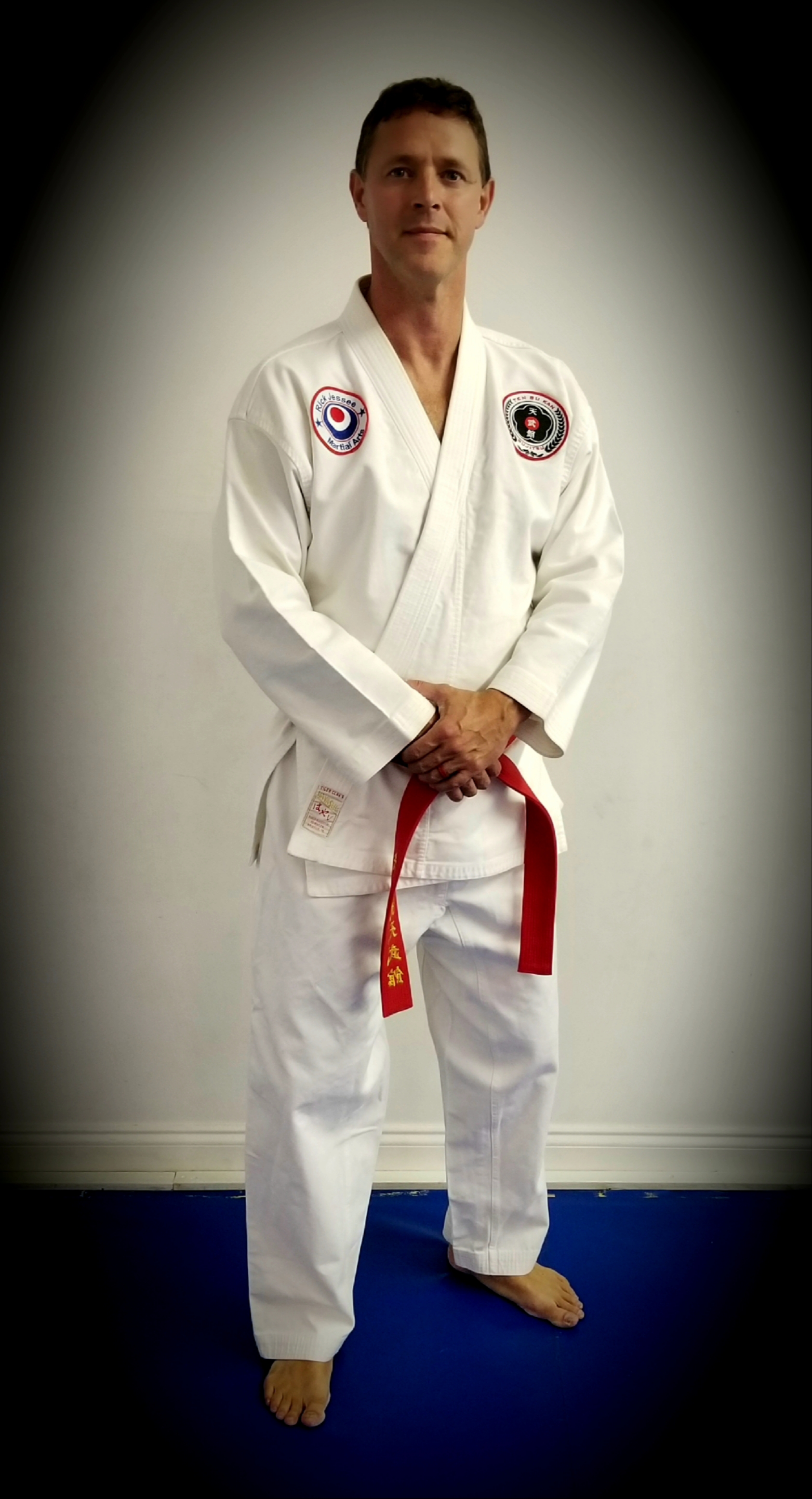
Hanshi Travis Ginn